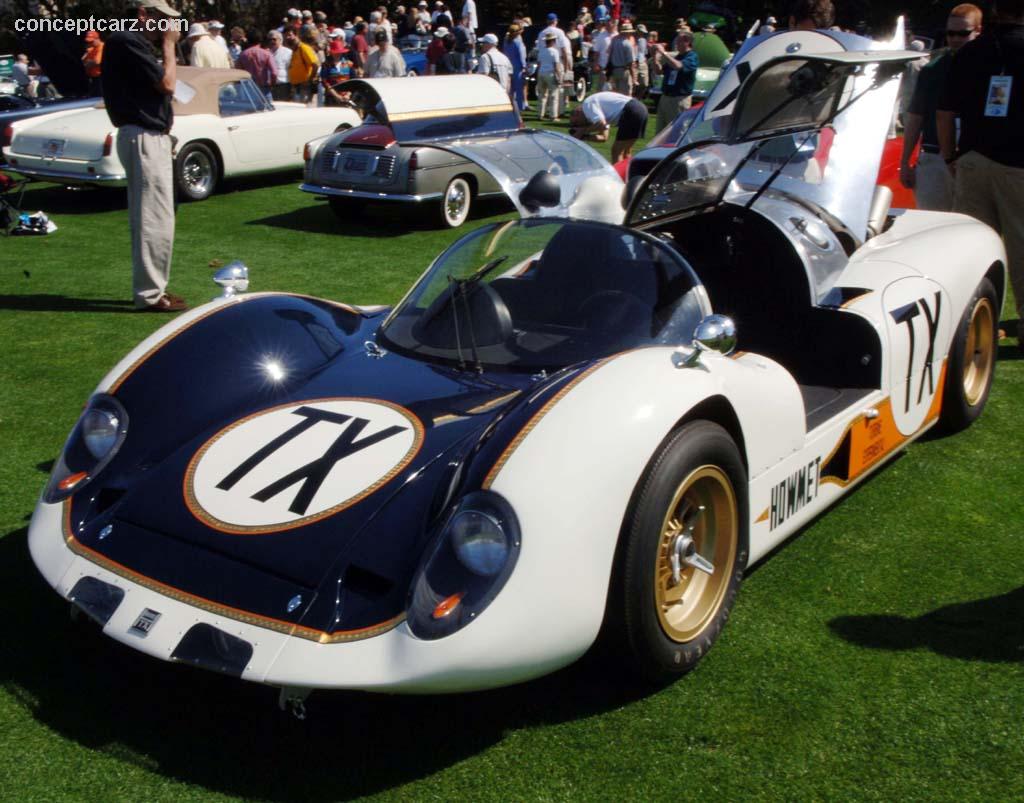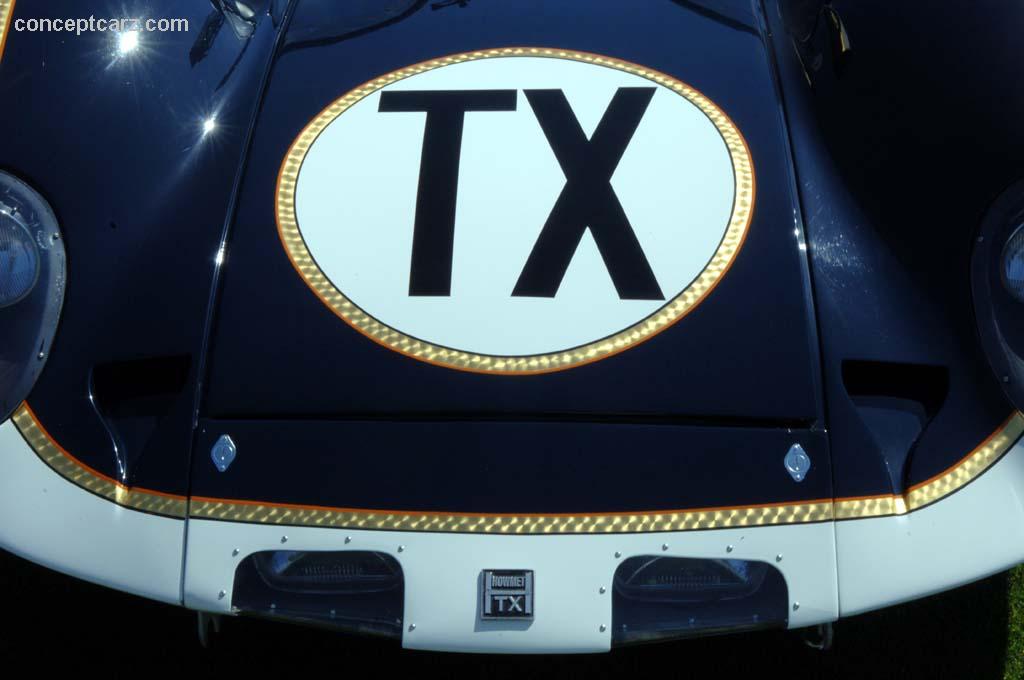Near the close of the 1960s, the American Howmet Corporation began using a turbine to power their racers. This was becoming popular with other marques such as Lotus with their Type 56, and the STP-Paxton cars of Andy Granatelli had done the same. The brain-child behind this project was Ray Heppenstall of Philadelphia, who had much experience in the world of racing. The idea was to mount a lightweight turbine engine into a race-car chassis. 
Gas Turbine
View info and historyMotorsports has always been very competitive and championships have been won by talent, luck, and lots of preparation and planning. To moderate competition and improve safety, racing regulations were introduced. This provided an even playing field between the competition. Some requirements dictated that a minimum number of vehicles must be produced in order to compete. Other rules limited the size of the engine or the weight of the vehicle. With the advent of the Can-Am series, the restrictions were mostly abandoned. During this period, lasting from 1966 through 1974, the output from the engines grew considerably producing well over a thousand horsepower. Lightweight and exotic materials were used to reduce the overall weight of the vehicle while maintaining structural rigidity. Heppenstall realized the potential of the turbine engine which can have incredible power density in respects to volume and weight. It is not unlikely for a small turbine engine to create hundreds or thousands of horsepower. This technology would be a considerable advantage over the competition.With this idea, Heppenstall approached his friend Tom Fleming who was an employee at the American Howmet Corporation. The Howmet Corporation was renowned for its metal work and a major supplier of precision castings. Fleming agreed to the idea of a turbine racer; the next obstacle was to convince the board of directors that a race-car program could be a way to promote their product. After some negotiation, the project was approved and suitable funding was obtained. Turbine power is common in aircraft. The creation of the engines is specialized, and the number of manufacturers is much smaller than those of regular engines. Heppenstall decision on who would be a suitable producer of the engine for the racer was limited but still a considerable number of candidates existed. Heppenstall chose the Continental Aviation & Engineering. They had recently lost a bid with the United States government for the production of turbine engines for an observation helicopter. As a result they had ten TS325-1 turbo-shaft engines available. The engines were light and compact, weighing just 170 pounds. They produced just over 320 horsepower and were capable of generating an impressive 650 foot-pounds of torque. The horsepower rating was rather low considering the output produced by other competition racers, but it had lots of potential. 
Gas Turbine
View info and historyBob McKee built a space-frame chassis to house the Continental turbine engines. They were placed in the rear of the vehicle sitting atop a single-speed transmission and powering the rear wheels. The vehicle was suspended in place by a wishbone suspension with springs and shock absorbers. Disc brakes were placed on all four corners and provided the stopping power. If the vehicle needed to travel in reverse, the power was supplied by a separate electrical motor. Though this added additional weight and complexity, it was required by FIA regulations. Mounted in front of the engine and behind the driver was a 32-gallon fuel tank.A formula was used to rate the engine at 2960 cc which made it eligible to race in the Group 6 Sports -Prototype class. In 1968 the Howmet TX made its debut at the 24 Hours of Daytona race. The vehicle bore the number 76 and was piloted by Heppenstall, Dick Thompson, and Ed Lowther. Immediately the vehicle showed potential and managed to run as high as third place. Thirty-four laps into the race, the waste-gate valve stayed shut as it was being driven through a corner. As a result, the vehicle had contact with the wall and was forced to retire. The following month the number 76 racer was entered into the 12 Hours of Sebring. Again, it was driven by Thompson, Lowther, and Heppenstall. During qualifying, it secured third place and was less than two seconds off the lead car's time. For six hours, the vehicle performed flawlessly, but in the seventh hour, an engine mounting broke, and the vehicle was again forced to retire. Over three seasons, the Turbine cars would be entered into 15 races. Mechanical difficulties would sideline the car six times. The first time the car finished a race was in SCCA competition in May of 1968. Driven by Ray Heppenstall it traversed 200 miles of the Cumberland 200 and finished in 2nd place. It had also set a new lap record. In June, Heppenstall won the Heart of Dixie race at Huntsville where he finished first in qualification and during the race. This was the first time the turbine racer would finish ahead of the other racers. The following week at Marlboro, Thompson and Heppenstall again finished in first place. In SCCA racing, the turbine racers were proving to be very successful. Another attempt in FIA racing occurred in July at the Watkins Glen 6 Hour race. Two cars were entered; one wearing number 67, and the other was 76. Hugh Dibley and Bob Tullis drove number 67. Dick Thompson and Day Heppenstall drove number 76. The cars qualified in 8th and 9th position and were running in third and fourth place for much of the race. Near the close of the race, the #67 car suffered transmission problems. They were able to finish the race, but they dropped to 12 place. The #76 car finished in 3rd. 
Gas Turbine
View info and historyThe 24 Hours of LeMans is one of the most prestigious races of the season. It is also one of the most competitive and grueling. Driver, car, and team are tested during those 24 Hours. Chassis number 1 and #2 were entered, both adorned in white and blue colors. The number 22 car was driven by Thompson and Heppenstall. The number 23 car was driven by Hugh Didley and Bob Tullius. Thompson was the first to drive during the race with Heppenstall serving as his replacement. After just three laps, Thompson returned to the pits to hand the car over to Heppenstall. The car was suffering from a fuel system problem which only reduced the power of the vehicle by about 30%. They kept the car in the race and managed to maintain 29th position. Just before 10 pm, Thompson crashed the car and was forced to retire. The second car also experienced mechanical difficulties early in the race. The problem took three hours to resolve. It re-entered the race but at the seventh hour, was disqualified for failing to have covered sufficient distance. This was the final racing appearance for the Howmet TX. The Howmet Corporation abandoned the racing program in 1969. The engines were returned to Continental, and the vehicles were sold to Heppenstall. Chassis number 1, with coupe configuration, was owned by a California collector for a number of years. It was purchased by Bruce Linsmeyer of Indiana in 2006. Chassis number 2, with Spyder configuration, was owned by Chuck Haines. Bob McKee, the original creator of the chassis, was commissioned to perform a restoration on the vehicle. Part of the restoration included the installation of an Allison 250C18 turbo-shaft helicopter engine. It was similar in output but weighed slightly less than the original. After its restoration it made an appearance at the 1996 Elkhart Lake meeting. It has also appeared at the Goodwood Festival of Speed. In 2000, chassis number 3 was used to create a third example, this one in coupe configuration. The work was done by McKee.
by Daniel Vaughan | Mar 2007

Gas Turbine
View info and history

Gas Turbine
View info and history

Gas Turbine
View info and history
by Daniel Vaughan | Mar 2007
1968 McKee Howmet TX Vehicle Profiles
Recent Vehicle Additions
Related Automotive News
RRDC VOTES IN 26 NEW MEMBERS FOR 2015
HILLIARD, Ohio (Oct. 23, 2015) - Twenty-six race-car drivers and motorsports professionals have been voted into the Road Racing Drivers Club in 2015. The group includes 11 Regular Members from the open-wheel and sports-car racing ranks, 10 Associate...

BILL WARNER IS RRDC'S 2014 BOB AKIN AWARD WINNER
DAYTONA BEACH, Fla. (Jan. 22, 2015) - Bill Warner, best known as the force behind the hugely successful Amelia Island Concours dElegance since 1996, received the 2014 Bob Akin Award from the Road Racing Drivers Club at a dinner prior to the running...
RACE FOR HUNTINGTON'S DISEASE RESEARCH BACKED BY AC/DC'S BRIAN JOHNSON AND CHAMPION DRIVERS AT SEBRING
SEBRING, Fla. (Oct. 11, 2013) - Seven champion race-car drivers and one rock star racer will compete in a Porsche 935 JLP HD1 on Dec. 8, 2013, in Sebring, Fla., to help raise funds and awareness for Huntingtons Disease (HD). The 4-hour endurance...

Sonoma Historic Motorsports Festival Celebrates Corvette'S 60 Years At Sonoma Raceway
Fast cars, fine food and wine highlight May 18-19 weekend
Paul Reinhart is honored guest, popular racing seminar scheduled for second year
SONOMA, Calif. (April 27, 2013) - The Sonoma Historic Motorsports Festival returns to Sono...

SCCA PRO RACING PLAYBOY MAZDA MX-5 CUP ROUNDS ONE AND TWO
The SCCA Pro Racing Playboy Mazda MX-5 Cup begins its 2013 campaign at Sebring International Raceway this week with a pair of races at the 61st Mobil 1 Twelve Hours of Sebring Fueled by Fresh From Florida.
Aside from battling for the Playboy MX-5 Cup...

























